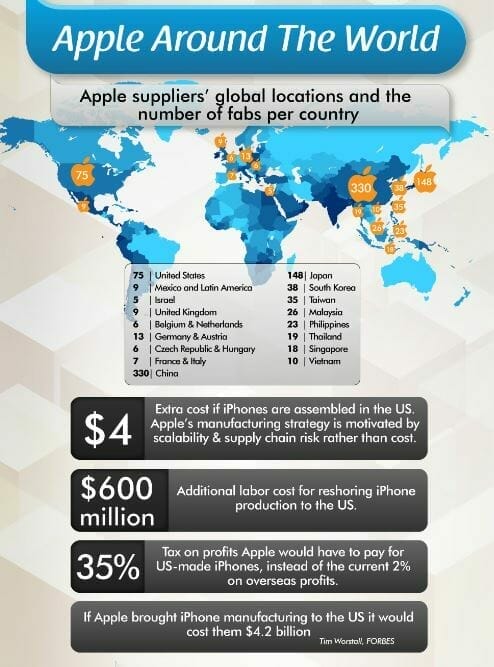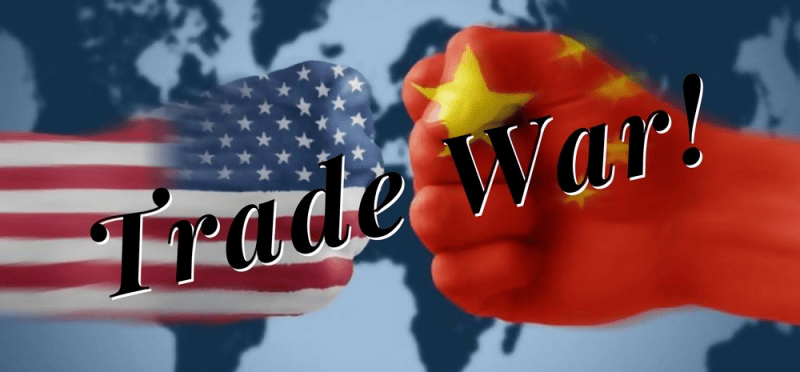For the uninitiated, a tariff is just a protectionist tax. Leaders of countries like the United States, seemingly disturbed by the disparity in the amount of goods bought vs good sold from places like China, impose tariffs as a way of discouraging importers from buying, say, Chinese instead of American.
The deficit with China is enormous, no argument there. But the U.S. runs trade deficits all over the world, approximately $900B in 2018, and economists aren’t sure that’s necessarily a bad thing.
The more popular the reserve currency is relative to other currencies, the higher its exchange rate and the less competitive domestic exporting industries become. This causes a trade deficit for the currency-issuing country, but makes the world happy.
–Investopedia
And since the U.S. dollar is the world’s reserve currency, deficits are unavoidable.
But President Trump wants to change that through tariffs. And when he first announced his intent on reviving tariffs, economists roundly criticized the move saying it would cause a global slowdown in trade.
On the surface, it’s lunacy. But there has always been an odd method to Trump’s madness.
See, Trump has often complained that the U.S. is being taken advantage of in its relationship with China. Obviously it’s factually untrue. China produces goods which are in high demand from American manufacturers who are eager to cut costs.
But, as always, there is a kernel of truth in the man’s ramblings: According to economist Richard Wolff, the Chinese government operates what are known as ‘zombie factories’ which are essentially coal plants or steel mills which produce commodities nobody needs.
These factories churn out goods at a rate which saturates the market and drives prices down so low they’re unprofitable, driving foreign competitors out of business.
Why? Because the Chinese government has decided keeping its own citizens employed is a priority.
And Trump understands this at a visceral level which is why he’s made it clear that he wants American companies to source their products from American manufacturers using American labour, or, at the very least, to not use Chinese manufacturing.
This is an issue because everyone uses China as their manufacturing hub. Everyone.
Wal-Mart (WMT.NYSE), Nike (NKE.NYSE) and Apple (AAPL.Q) all use China as a major part of their supply chains, but telecommunications seems to have really piqued President Trump’s interest.
Moving beyond tariffs, Huawei, the largest telecommunications equipment manufacturer in the world, was banned from buying U.S. technology on May 16, 2019.
Integrated circuits, or microchips, made up the plurality of Chinese imports in 2017. For a country which has had longstanding difficulties in manufacturing its own chips, this will be a problem, and not just for Huawei.
Since the trade war began, China has gone tit-for-tat with the U.S. One side imposes tariffs, the other does the same. But Trump’s attempt to strangle Huawei is a curious move considering American telecommunications company supply chains.
Apple, for instance, manufactures most of its products in China. In 2016, 346 of Apple’s 766 global suppliers were in China.

Morgan Stanley published a report which said the latest round of U.S. tariffs could raise the price of Chinese-made iPhone XS models by up to $160 and that Apple’s earnings could drop by $3 a share in 2020 if the company attempted to shield consumers from the price hike.
But what happens if the Chinese government really starts playing hardball? And what if things move beyond telecom and into furniture or clothing?
The market doesn’t seem to consider the long-term here. The Chinese can’t afford to back down, not if they are serious about surpassing the U.S. as the world’s dominant power. And as one of Asia’s many shame and honour cultures, losing face is not an option, not with the whole world watching.
We’re all well-acquainted with President Trump’s fixations by this point as well. The man refuses to let himself be bested.
Everything points towards escalation, but the market is up 15% year-to-date. For the most part, share prices across the board does not reflect the reality of major players like Apple and Nike having to move their operations to a place like Vietnam, an event which could disturb supply chains for two consecutive quarters.
One company which may be poised to benefit from the trade war and Huawei’s ban from accessing American chips is Cisco Systems (CSCO.Q).
In February, Huawei announced it planned to deploy 5G network coverage at Hongqiao Railway Station by the end of 2019, a notable step in the international telecommunications race between China and the U.S.
But with Huawei being denied U.S. chips, there are concerns the “global” rollout of 5G will experience substantial delays.
While some media outlets might paint this as a blow to a unified effort to increase interconnectivity around the globe, the truth is most likely far less sanguine.
President Trump, aware the Chinese are making headway in the tech race through telecom giant Huawei, probably sought to cripple the company’s greatest ambition and stymie a victory over U.S. tech companies.
Companies like Cisco Systems which are free to buy as many microchips as they please. Here is its CEO, Chuck Robbins’, response to a question about consumers potentially having to choose between Cisco and Huawei:
“We have new technologies coming out this year to support this 5G transition that our customers are about to go through. So we feel very good about our ability to win based on our innovation.”
Cisco stock rose $3.49 on the news of Huawei’s ban with share price holding at $56.35 by market close on Friday.
If one thing’s for certain, this is about much more than cellphones. I’d expect to see far more government overreach muddying the markets before this thing is over.
–Ethan Reyes

